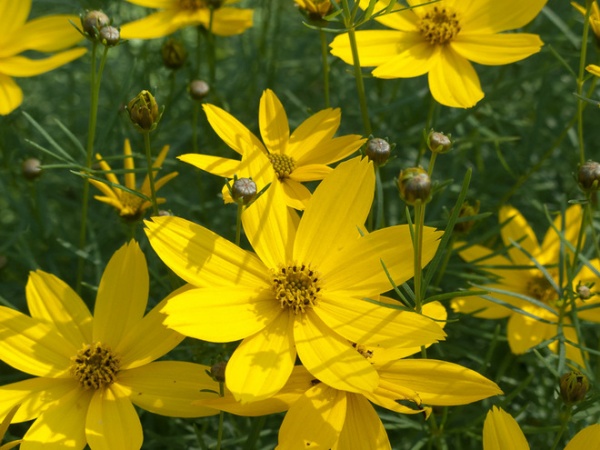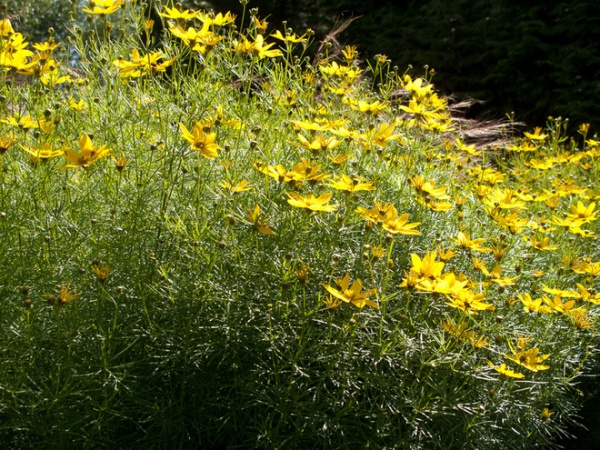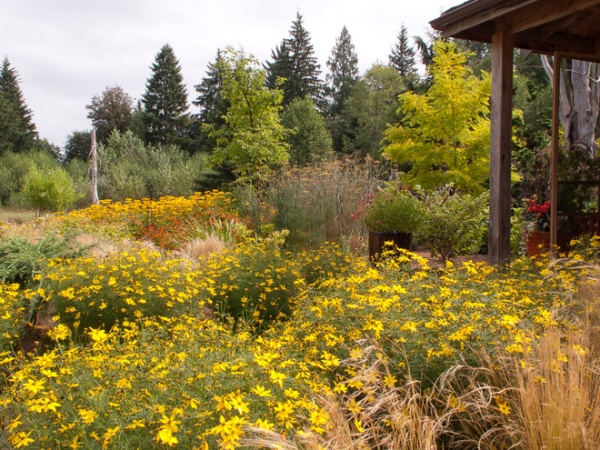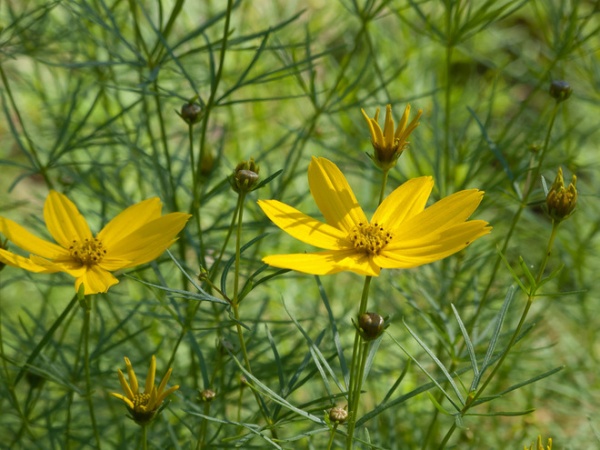Great Design Plan: Zagreb Tickseed Takes Care of Itself (Almost)
http://decor-ideas.org 06/17/2014 00:15 Decor Ideas
I have two important criteria when it comes to plants: They must be drought tolerant and deer resistant. Zagreb tickseed is a winner. Rabbits did munch on one plant early in the season, but the tickseed quickly outgrew the rabbit with no detrimental effects. This perennial has proven itself as a true stalwart in my garden, thriving with no care from me whatsoever besides cutting back the finished stems in late fall. If you are looking for a perennial that virtually takes care of itself, this could well be the answer.

Botanical name: Coreopsis verticillata ‘Zagreb’
Common name: Zagreb tickseed
Origin: Threadleaf tickseed is native to the southeastern United States, but the cultivar Zagreb is a garden hybrid
Where it will grow: Hardy to -40 degrees Fahrenheit (USDA zones 3 to 9; find your zone)
Water requirement: Average to low
Light requirement: Full sun
Mature size: 2 feet tall and wide but will spread slowly to form larger clumps
Benefits and tolerances: Attracts butterflies and bees; deer and rabbit resistant (mostly); low maintenance; drought tolerant; tolerates poor soil
Seasonal interest: Midsummer to fall
When to plant: Spring or fall

Distinguishing traits. Zagreb tickseed has golden-yellow daisies and feathery foliage. It also has a long bloom time and spreads much less aggressively than the species, especially in poor, dry soil.
When planted as a mass, this tickseed becomes a sunny yellow haze with soft, feathery foliage that moves gently in the breeze. The flowers themselves last from midsummer to fall without deadheading, although I suspect the blooms would be even more prolific were I to take the time to deadhead.

How to use. Plant this in large groups to create a meadow effect or use it to line a pathway or edge a border. Add a single plant to large containers — I like it as a lower tier to tall Canna, such as Tropicanna, or the black foliage of Bishop of Llandaff dahlia. It also makes an attractive addition to a cottage garden.

Planting notes. Plant in well-drained soil (average or poor) and this will thrive. It does not need any special fertilizer or care.
Deadheading is not necessary and would be too time consuming. Some gardeners like to shear back the plant in midsummer to encourage more flowers, but I have never done so, since it blooms until early fall anyway.
By late summer the billowing foliage may begin to flop over a little, especially if you have rich soil. This is usually a problem only if the plants have been used to line a pathway. If this happens simply insert a series of twigs or sticks in a crisscross pattern to discreetly hold them back. The clumps will spread and can be divided and transplanted to other areas in early spring or late fall.
Browse more bright and colorful flowers
Related Articles Recommended












